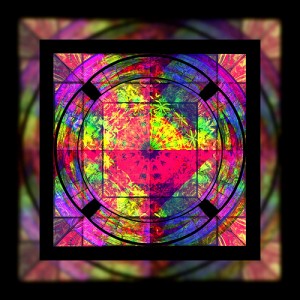How Different Colors Impact Your Behavior and Emotion –
I love color! I am captivated by the way colors interact in a garden, a painting, or even a rack of sweaters in a department store. It intrigues me when I look in my friend’s closet and see all of her clothes organized by color. But my closet, with its chaotic array of colors, makes me smile. My mom always says it is my artist’s soul that allows color to bring me such pleasure. She may be right but I think everyone reacts, in some way, to color. It has been proven to have an effect on both your behaviors and your emotions.
Color and Your Mood
When we talk about your mood, we are referring to the quality of your feelings at a specific time. How can color affect a person’s mood? Different colors can elicit very personal feelings in individuals. Often, these feelings come from past experiences, or the culture you were raised in. In our society white is worn for weddings, as a symbol of innocence and purity. In some Eastern cultures white is the color worn for mourning, therefore it is the color associated with grief. Cool colors, such as blues and greens, are considered calming. Warm shades, like red and orange, evoke feelings of warmth and comfort for some, but hostile, angry feelings in others. Scientists have not done large scale research on color and its effect on people, so there is not very much empirical evidence to prove the theory. What remains is a lot of anecdotal evidence on color and human mood and emotion. My favorite color is red! If I want to feel vibrant and in charge I will wear my favorite red sweater. It seems to boost my mood and my confidence at the same time. I guess that is my contribution to anecdotal evidence.
Color and Your Emotions
Your emotions are a bit different from your mood. Emotions are a physiological response to your circumstances and your mood. You do not consciously choose the emotions that you are feeling. However, your emotions are shaped by the situations you are in and this is where color can effect a change. Have you ever noticed that doctors’ offices and hospital rooms are usually painted in muted shades of green, blue, and gray? It is not a coincidence, but rather an effort to ease the emotional state of people who are nervous or scared to be in that place. Those soft, cool colors are believed to have a calming effect on your emotions. Bright, primary colors are found in preschool settings because they are stimulating and engaging and are thought to make the children a little more excited.
While science may not have proven the connection between color and your moods and emotions, you have probably noticed this, in some way, in your own life. Colors can make you feel better. Ancient cultures, such as the Chinese, practiced chromotherapy as a healing ritual. The belief was that colors could heal physical problems. Alternative medicine and holistic practitioners still use this method today. Orange was thought to heal the lungs and increase energy levels. Blue was soothing to those that suffered from pain. Red increased circulation. Yellow was used to purify the body.
Anytime people start to talk about things that are abstract, like color, and how they can affect your life there is bound to be some skepticism. I believe that there does not have to be absolute proof of something like this to make it real. I know how color can make me feel and I bet that even the most skeptical of you will paint your bedroom a color that gives you a calm and comfortable feeling. I am going to go put on my red sweater and start a strong and confident day!


